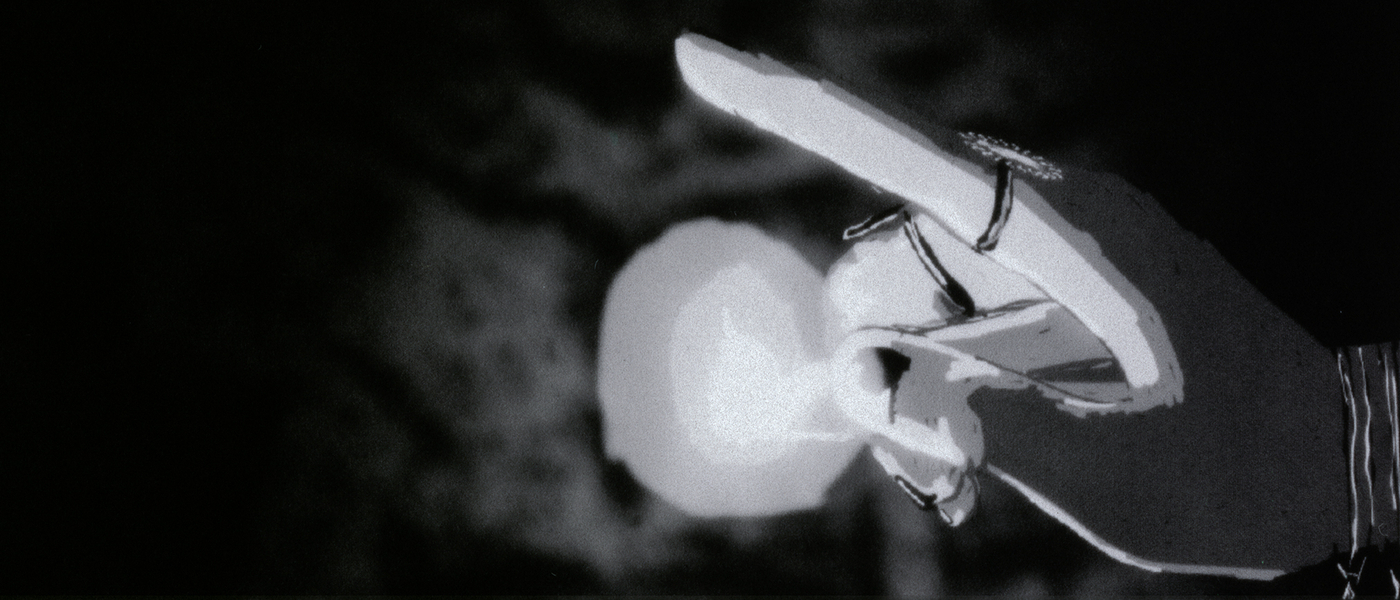About Via Dolorosa
by Marie-Pauline Mollaret

by Marie-Pauline Mollaret
Via Dolorosa’s vibrant, fierce, and spontaneous animation offers a punk and contrasted portrayal of Jerusalem, while also touching on the director’s memories of her teenage years. The film is a cornucopia of strokes, silhouettes, of various snippets and echoes, which at times seem to mimic our inconsistent memory, in which past moments resonate with contemporary footage. A starkly contrasted kaleidoscope of sounds, images, lights, and movements, Rachel Gutgarts’ utterly personal perambulation reveals both an intimate experience and the multiple facets of the city itself.
Interview with rachel Gutgarts
What's the genesis of the project?
The idea for the film came to me when I was standing in line at the supermarket, a few teenages in the queue tried to buy some beers, none of them had an ID so the clerk wouldn't sell it to them. This Banal experience of adolescence felt so familiar to me. It touched a nerve regarding my own adolescence which I remember as quite a miserable time in my life.
Via Dolorosa appears like a very personal documentary on the path of your "lost youth" in the streets of Jerusalem. What is the balance between the autobiographical part and the fictional one?
The film is indeed very personal. I wrote it with my best friend from my teen years, Einat Gaulan. We spent a long time trying to recreate memories from that time and to compose them into one allegorical night. I also went with friends to the same spots we used to go to and interviewed teens hanging out there now.
In the film, the teenage impressions of growing up in the city merge with what was caught on camera while wandering the streets at night. I recreated certain teen 'rituals' and nuances like playing with a lighter until my fingertips burn or climbing the roof of my school.
It was an attempt to re-imagine a certain atmosphere I remember. There is not much fiction in the film, it's rather autobiographical but it is based on recent footage. I would say it's more of an attempt to suggest a subjective view on growing up in a city like Jerusalem.
It's also a strong portrait of Jerusalem. What did you want to share about that city?
My dad always says that in ancient cities like Jerusalem, the inhabitants carry the weight of its history on their backs. I wanted to bring this thought into the film, there are many religious signs and iconography scattered throughout the film hinting at Jerusalem's long history of conquers.
Jerusalem has been and still is divided into many different groups and sub groups of religious minorities. Each with its own beliefs and rituals, each claiming a piece of the city to themselves. I grew up surrounded by holy places. In this film, just as in my adolescence, I enjoy toying with the concept of holiness and trying to figure out what is holy for myself.
Working with composer Aviv Stern, we tried to recreate the unique sounds of Jerusalem through field recordings and ambience from the city. We also used live recordings from the local punk / noise scene, a sub - group of its own in the city to which I feel especially close to.
Can you tell us a few words on your aesthetic choices and the animation techniques you used?
The animation is a tool I use to create a subjective view, interpreted from the real footage taken. It allows me to create intimate moments with people and situations while they stay guarded in anonymity.
The technique used was developed with my partner Noam Horowitz, it is an evolution of the technique used in my former film, A Love Letter to the One I Made up. We use silver gelatin printing to create analog masks and textures on the animation.
As the entire film is happening in one night, combined with the technique chosen, it was natural for me to address light as a main visual subject. In the film, the light leads the way, it marks and questions what is holy. Working with analogue materials made this search feel very visceral, the photosensitive materials give measurements to these abstract ideas.